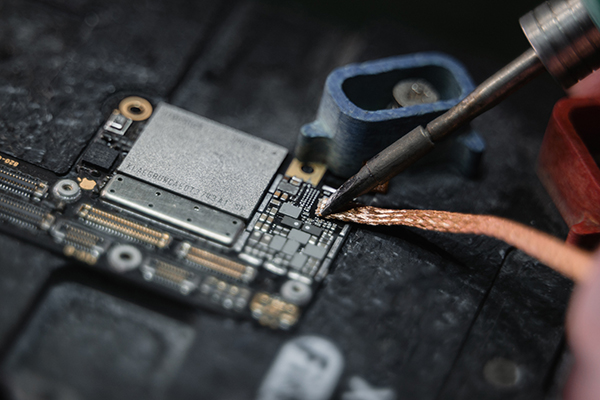
The manufacturing process of PCBA involves many links. In order to produce good products, the quality of each link must be controlled. General PCBA includes: PCB manufacturing, component procurement and inspection, SMT processing, plug-in processing,program ignition, testing, aging and a series of processes, the following AiXun Precision Soldering will detailed explain the matters that need to be paid attention to in each link.

1. PCB circuit board manufacturing
After receiving the PCBA order, analyze the Gerber file and pay attention to the relationship between the hole spacing of the PCB and the bearing capacity of the board. Do not cause bending or breakage. Whether the wiring takes into account key factors such as high-frequency signal interference and impedance.
2. Sourcing and checking components
The procurement of components needs to strictly control the channels, and the goods must be picked up from large traders and original factories, and 100% avoid second-hand and fake materials. In addition, set up a special inspection post for incoming materials, and strictly carry out the following item inspections to ensure that components are free from failure.
PCB: Reflow soldering oven temperature test, no flying leads, whether via holes are blocked or ink leaks, whether the board surface is bent, etc.
IC: Check whether the silk screen is exactly the same as the BOM, and store it at a constant temperature and humidity
Other common materials: check the silk screen, appearance, power-on measurement value, etc., the inspection items are carried out according to the random inspection method, and the proportion is generally 1-3%
3. SMT Assembly processing
The temperature control of solder paste printing and reflow soldering oven is the key point, and it is very important to use a laser stencil with good quality and meeting the process requirements. According to the requirements of the PCB, some of them need to increase or reduce the size of the stencil hole, or use U-shaped holes to make the stencil according to the process requirements. The furnace temperature and speed control of reflow soldering is critical to the infiltration of solder paste and soldering reliability, and it is sufficient to control according to the normal SOP operation guidelines. In addition, AOI detection needs to be strictly implemented to minimize the adverse effects caused by human factors. STM welding tools can directly use AiXun intelligent soldering station.
In the plug-in process, the mold design for wave soldering is a key point. How to use the mold to maximize the probability of providing good products after the furnace is a process that PE engineers must continue to practice and sum up experience.
In the previous DFM report, you can suggest to the customer to set some test points (Test Points) on the PCB, the purpose is to test the continuity of the PCB and the PCBA circuit after all the components are soldered. If possible, you can ask the customer to provide the program, and burn the program into the main control IC through a burner (such as ST-LINK, J-LINK, etc.). The functional changes brought about by various touch actions can be tested more intuitively, so as to verify the functional integrity of the entire PCBA.
6. PCBA board test
For orders with PCBA test requirements, the main test content includes ICT (In Circuit Test), FCT (Function Test), Burn In Test (aging test), temperature and humidity test, drop test, etc. The specific operation is based on the customer's test plan and aggregate report data
The above is the "key points of PCBA process control and quality control" shared by AiXun. Follow AiXun, we update daily!
 WhatsApp
WhatsApp